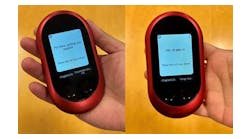The Internet of Things (IoT) will soon be the new normal for airports around the world. Ground operations, security checkpoints, runway monitoring, baggage handling and building management are all among the functions that will be transformed through a network of internet-connected objects that rely on embedded sensors to collect and exchange data.
Timely data is critical to running a smart airport, as this information can be continuously pushed out to guide passengers on their journey and help operations personnel, airlines and retail vendors run more efficiently. Let’s take a look at a few examples.
Asset Health Monitoring
Aircraft maintenance is generally performed at operating-hour intervals, which can create downtime and a loss of efficiency. But when you add IoT to the mix, smart sensors and analytics are attached to aircraft systems to allow for remote inspection and repairs only when necessary. Making this pivot in the way aircrafts are maintained using IoT insights can greatly improve operations via fewer flight delays for maintenance. It can also extend the total lifespan of the aircraft’s engine. For passengers, when aircraft repair needs to occur, travelers can benefit through automatic notifications sent to their mobile devices, resulting in more transparency and fewer hours waiting at the gate.
Asset Tracking
Startups all the way up to major consumer brands like Samsonite are developing smart luggage with the IoT in mind. From carry-on baggage to large suitcases, luggage is now being equipped with features such as GPS tracking, fingerprint locks, weight notifications and proximity sensors. Airlines are also starting to lead the charge by implementing connected beacons during the baggage handling process. This in turn gives airlines the ability to transmit baggage proximity information to customers at bag drop and baggage claim. In fact, by 2018, SITA estimates that nearly half of airports will be using IoT sensors to push out this information to passengers as it improves confidence in an area that has traditionally been a black box.
Beacons and Proximity Insights
Aggregated, anonymous geolocation data culled from smartphones and other devices can give airport operators better insights into passenger flows and the ability to adjust operational procedures to smooth out peaks during the day’s high traffic periods. Information that can be provided to passengers includes accurate queuing times at security and other bottleneck areas, which helps avoid further congestion. With these advantages, proximity sensing is expected to have a major impact on airport operations.
Beacons and their location awareness capabilities will also play a big part in the creation of intelligent airports, helping to successfully exploit business intelligence and analytics. Using the technology, passengers can receive real-time alerts such as welcome messages upon arrival to the airport, anticipated walk times between gates and terminals, retail shopping guides, and notifications regarding which baggage claim carousel is holding their luggage at arrival. In an industry that puts a large focus on service, these new tech offerings can be a real gamechanger for building a world class airport.
The world of IoT comes with many promises, but to make it a reality, airports must first focus on their wireless technology as efficient networks are at the foundation of powering seamless connectivity. Converged networks that feature both cellular and Wi-Fi technologies present ideal options for IoT readiness and should be properly examined prior to launching new IoT initiatives.
IoT has arrived to create smarter, more efficient airports. Is your airport ready to come aboard?
Brian Shields is director of engineering at Boingo Wireless (NASDAQ: WIFI) where he is responsible for the management of customer-facing web and advertising properties. He oversees web portals for venues where Boingo runs the wireless network, serving as the technical backbone for architecting and designing the interface.
Prior to joining Boingo in 2007, Shields was general partner at io intermedia. He also held roles at Impress Communications and Datalicious. He is an expert in Sitecore and Amazon Web Services and is actively involved with the Wireless Broadband Alliance (WBA).

![Logo Notag Hex[1]x100 Logo Notag Hex[1]x100](https://img.aviationpros.com/files/base/cygnus/cavc/image/2020/10/logo_notag_hex_1_x100.5f9c63c6d8cae.png?auto=format,compress&fit=fill&pad=5&fill-color=white&q=45&h=139&height=139&w=250&width=250)


